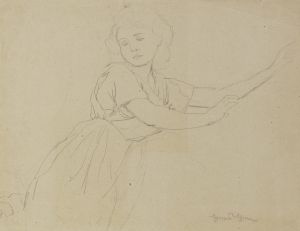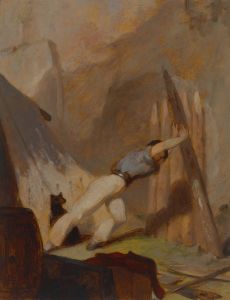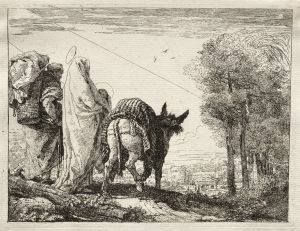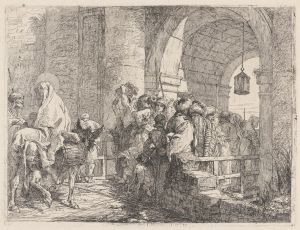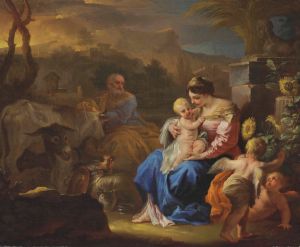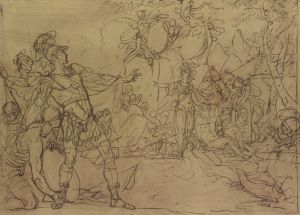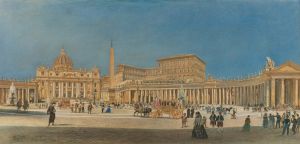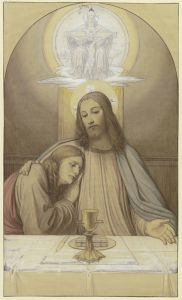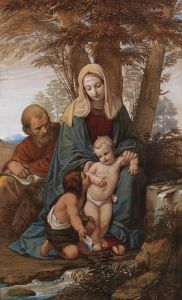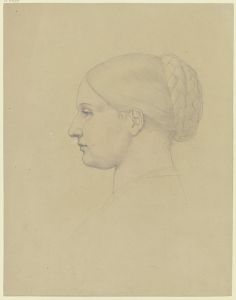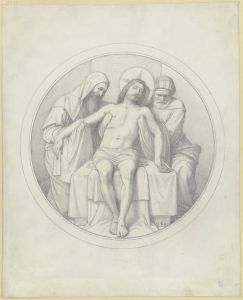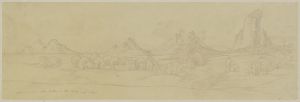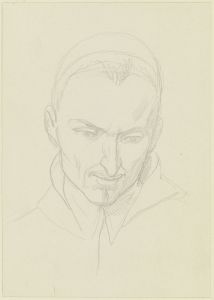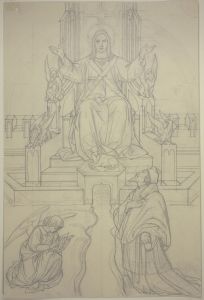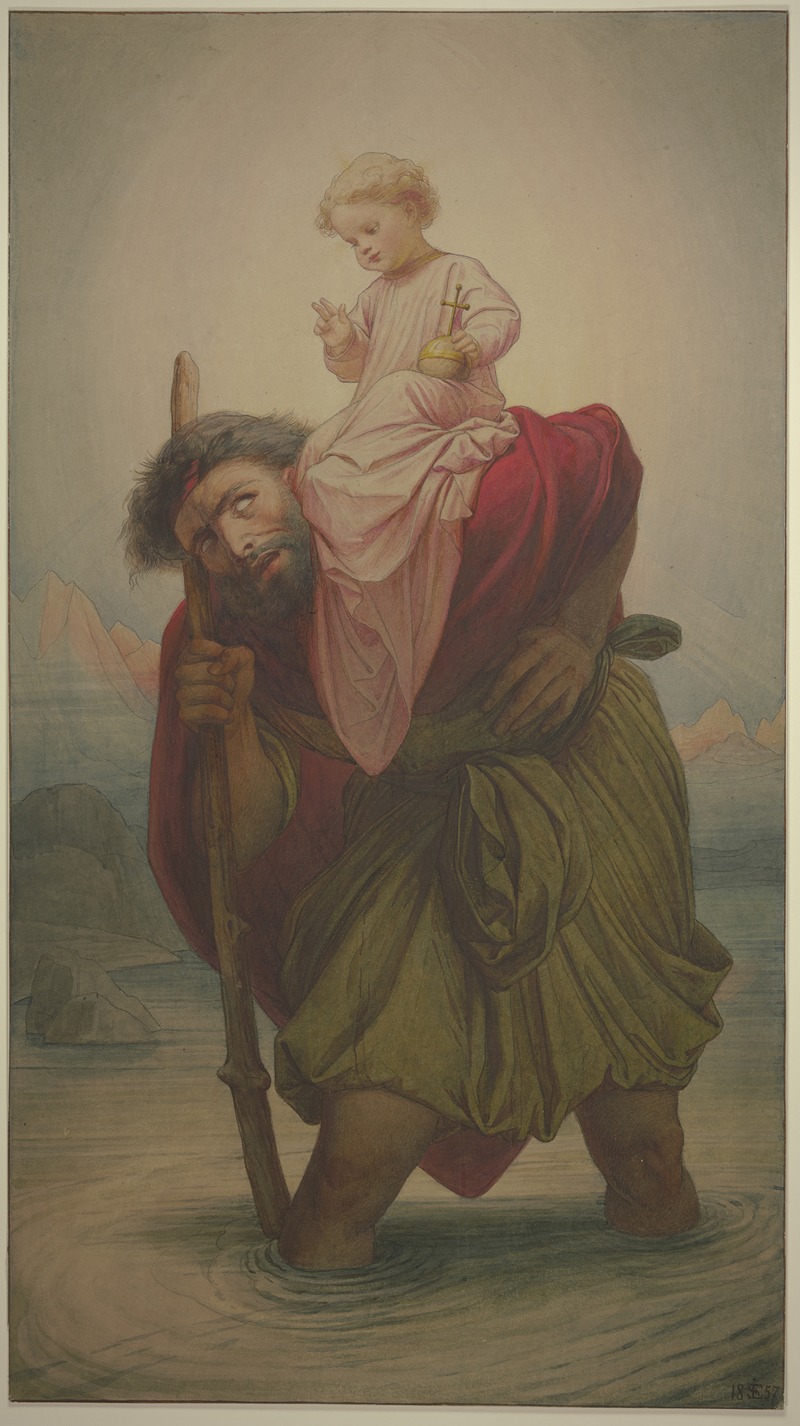
Der Heilige Christophorus mit dem Jesuskind im Fluß, 1857
A hand-painted replica of Eduard von Steinle’s masterpiece Der Heilige Christophorus mit dem Jesuskind im Fluß, 1857, meticulously crafted by professional artists to capture the true essence of the original. Each piece is created with museum-quality canvas and rare mineral pigments, carefully painted by experienced artists with delicate brushstrokes and rich, layered colors to perfectly recreate the texture of the original artwork. Unlike machine-printed reproductions, this hand-painted version brings the painting to life, infused with the artist’s emotions and skill in every stroke. Whether for personal collection or home decoration, it instantly elevates the artistic atmosphere of any space.
Eduard von Steinle's painting "Der Heilige Christophorus mit dem Jesuskind im Fluß" (Saint Christopher with the Christ Child in the River), created in 1857, is a notable work of religious art from the 19th century. Steinle, a German painter associated with the Nazarene movement, was known for his religious and historical subjects, and this painting is a testament to his skill in depicting biblical themes with emotional depth and clarity.
The painting illustrates the legendary story of Saint Christopher, a popular figure in Christian hagiography. According to legend, Christopher was a giant who sought to serve the greatest king. After realizing that even earthly kings feared the devil, and the devil feared Christ, Christopher decided to serve Christ by helping people cross a dangerous river. One day, a child asked for his help to cross. As Christopher carried the child across the river, the child grew heavier with each step. Upon reaching the other side, the child revealed himself as Christ and explained that he was carrying the weight of the world. This revelation led to Christopher's conversion and eventual sainthood.
Steinle's depiction captures the moment of this miraculous crossing. The composition of the painting emphasizes the physical and spiritual struggle of Saint Christopher. The artist uses a dramatic interplay of light and shadow to highlight the figures of Christopher and the Christ Child, drawing the viewer's attention to their expressions and the symbolic nature of their journey. The river, depicted with swirling currents, adds to the sense of movement and challenge, while the serene expression of the Christ Child contrasts with the effort shown by Christopher, symbolizing divine grace and strength.
Eduard von Steinle was a prominent member of the Nazarene movement, a group of early 19th-century German Romantic painters who sought to revive honesty and spirituality in Christian art. The Nazarenes were known for their detailed and idealized representations of biblical scenes, often drawing inspiration from the Italian Renaissance and early Christian art. Steinle's work is characterized by its meticulous attention to detail and its ability to convey deep spiritual messages through visual storytelling.
"Der Heilige Christophorus mit dem Jesuskind im Fluß" is a reflection of Steinle's commitment to these ideals. The painting not only serves as a religious icon but also as a piece of art that invites contemplation on themes of faith, service, and divine revelation. It is an example of how 19th-century artists engaged with religious narratives to explore broader human experiences and spiritual truths.
Steinle's work was influential in the development of religious art in Germany and beyond, and his paintings continue to be appreciated for their artistic and spiritual depth. "Der Heilige Christophorus mit dem Jesuskind im Fluß" remains a significant piece within his oeuvre, exemplifying the artist's ability to blend narrative, symbolism, and emotion in a harmonious and impactful manner.





